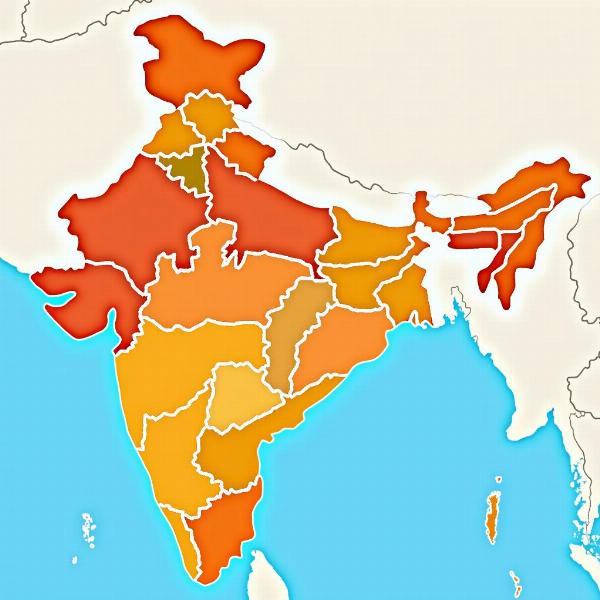Daso (दसो) is a commonly used word in Hindi, often heard in conversations and seen in various forms of media. Understanding its meaning and usage can greatly enhance your grasp of the Hindi language. This article will delve into the various meanings of “daso” in Hindi, providing clear examples and exploring its nuances within different contexts.
Understanding the Different Meanings of “Daso” (दसो)
“Daso” is primarily the imperative form of the verb “denaa” (देना), which means “to give.” Therefore, the most common meaning of “daso” is “give” (singular, informal). It’s used when addressing someone familiar, like a friend or family member.
However, “daso” can also be used in other ways, adding a layer of meaning beyond a simple command. It can express:
- A request: Instead of a direct command, “daso” can soften the tone and imply a polite request.
- An invitation to share: In some contexts, “daso” can mean “tell me” or “share with me.” This is particularly common when asking for information or opinions.
- An exclamation of anticipation: Sometimes, “daso” can be used to express excitement or anticipation, similar to “come on!” or “let’s have it!”
“Daso” in Everyday Conversations
The versatility of “daso” makes it a frequent part of everyday Hindi conversations. Imagine these scenarios:
- At a restaurant: “Ek chai daso!” (Give me a tea!)
- Asking a friend for help: “Mujhe apna pen daso.” (Give me your pen.)
- Asking for information: “Kya hua, daso!” (What happened, tell me!)
- Encouraging someone to share a story: “Aur phir kya hua, daso!” (And then what happened, tell me!)
Formal Alternatives to “Daso”
While “daso” is appropriate in informal settings, more formal situations require alternative expressions. These include:
- Deejiye (दीजिये): This is the respectful form of “daso” and is used when addressing elders or those you wish to show respect.
- Krupa karke deejiye (कृपया करके दीजिये): This translates to “please give” and is the most polite and formal way to request something.
Regional Variations in the Use of “Daso”
Like many Hindi words, the usage and pronunciation of “daso” can vary slightly across different regions of India. While the core meaning remains the same, subtle differences in intonation and context can add regional nuances.
 Regional Variations in Hindi
Regional Variations in Hindi
“Daso” in Hindi Literature and Media
“Daso” frequently appears in Hindi literature, songs, and movies, reflecting its common usage in spoken Hindi. Its presence in these media adds to the authenticity and natural flow of dialogue.
What does Daso mean when asking for information?
When someone says “Daso!” in a context where information is being sought, it translates to “Tell me!” or “Share with me!”. It’s an invitation to divulge details or share one’s perspective.
Can “Daso” be considered rude?
While “daso” itself isn’t inherently rude, its informality can be inappropriate in certain situations. Using it with elders or in formal settings can be perceived as disrespectful. It’s crucial to be mindful of the context and your relationship with the person you’re addressing.
How do I respond to “Daso”?
Responding to “daso” is straightforward. Simply provide the requested information or item. If it’s a request rather than a command, you can politely decline if necessary.
Conclusion: Mastering the Nuances of “Daso”
Understanding the various meanings and contextual uses of “daso” is crucial for effective communication in Hindi. By recognizing its nuances, you can navigate social interactions with greater ease and express yourself more accurately. While its primary meaning is “give,” its use can extend to polite requests, invitations to share information, and even expressions of anticipation. Mastering this seemingly simple word can greatly enrich your understanding and appreciation of the Hindi language.
FAQs about “Daso”
-
What is the literal meaning of “daso”? The literal meaning of “daso” is “give” (singular, informal).
-
Is “daso” considered polite? “Daso” is suitable for informal settings but can be considered impolite in formal situations or when addressing elders.
-
What are the formal alternatives to “daso”? Formal alternatives include “deejiye” and “krupa karke deejiye.”
-
How is “daso” used in different regions of India? While the core meaning remains consistent, regional variations in pronunciation and usage exist.
-
Why is understanding “daso” important? Understanding “daso” enhances your comprehension of Hindi conversations and helps you communicate more effectively.
Related Articles
Meaning-Hindi.in is your one-stop solution for all your Hindi translation needs. We offer a wide range of professional translation services, including business and commercial document translation, certified and legal document translation, technical and user manual translation, website and localization services, educational and academic document translation, and express translation services for various specialized fields. Our team of expert Hindi linguists ensures accurate and culturally sensitive translations, tailored to your specific requirements. For all your Hindi translation needs, contact us at [email protected] or call us at +91 11-4502-7584. Let Meaning-Hindi.in be your trusted partner for bridging the language gap.